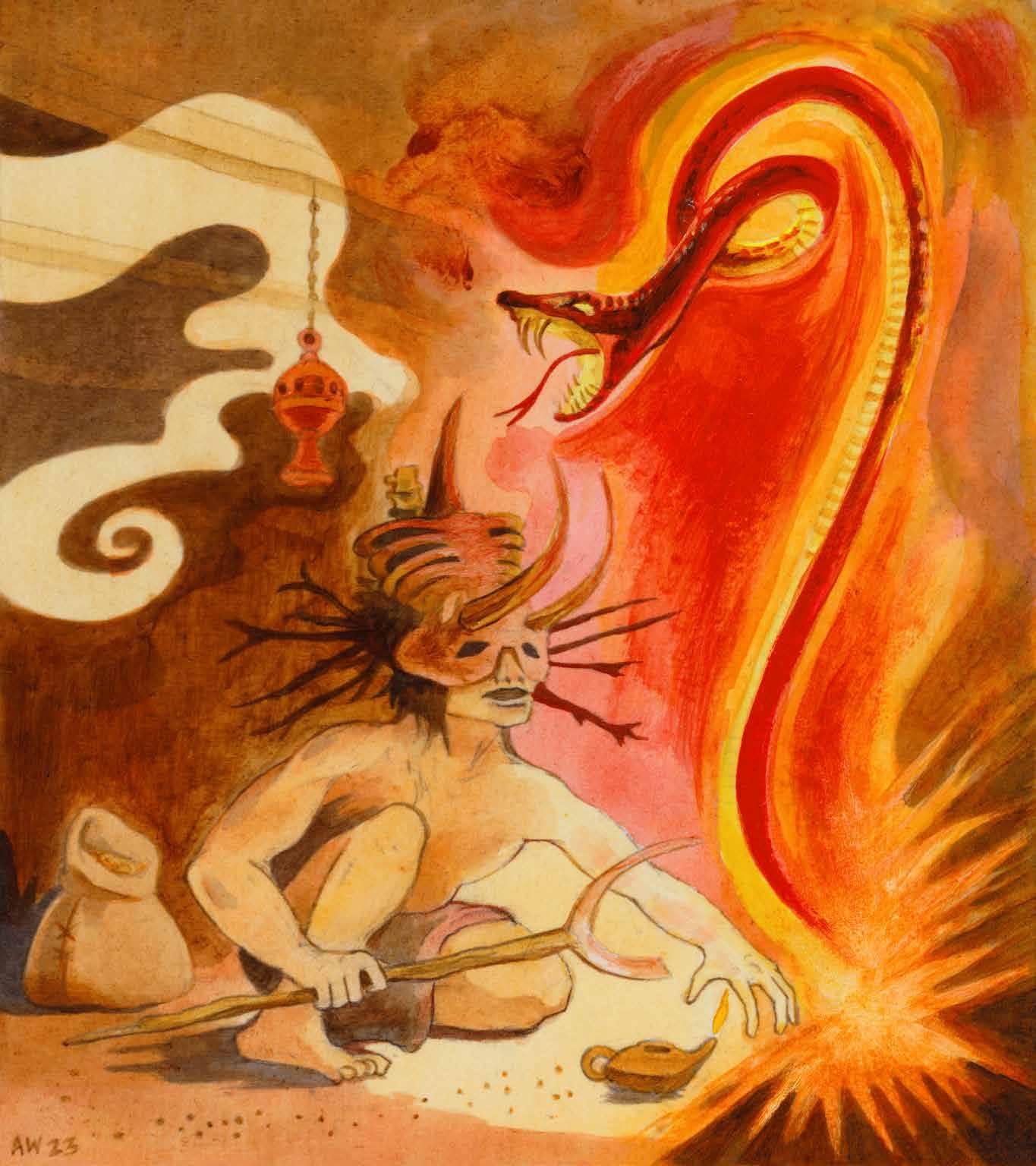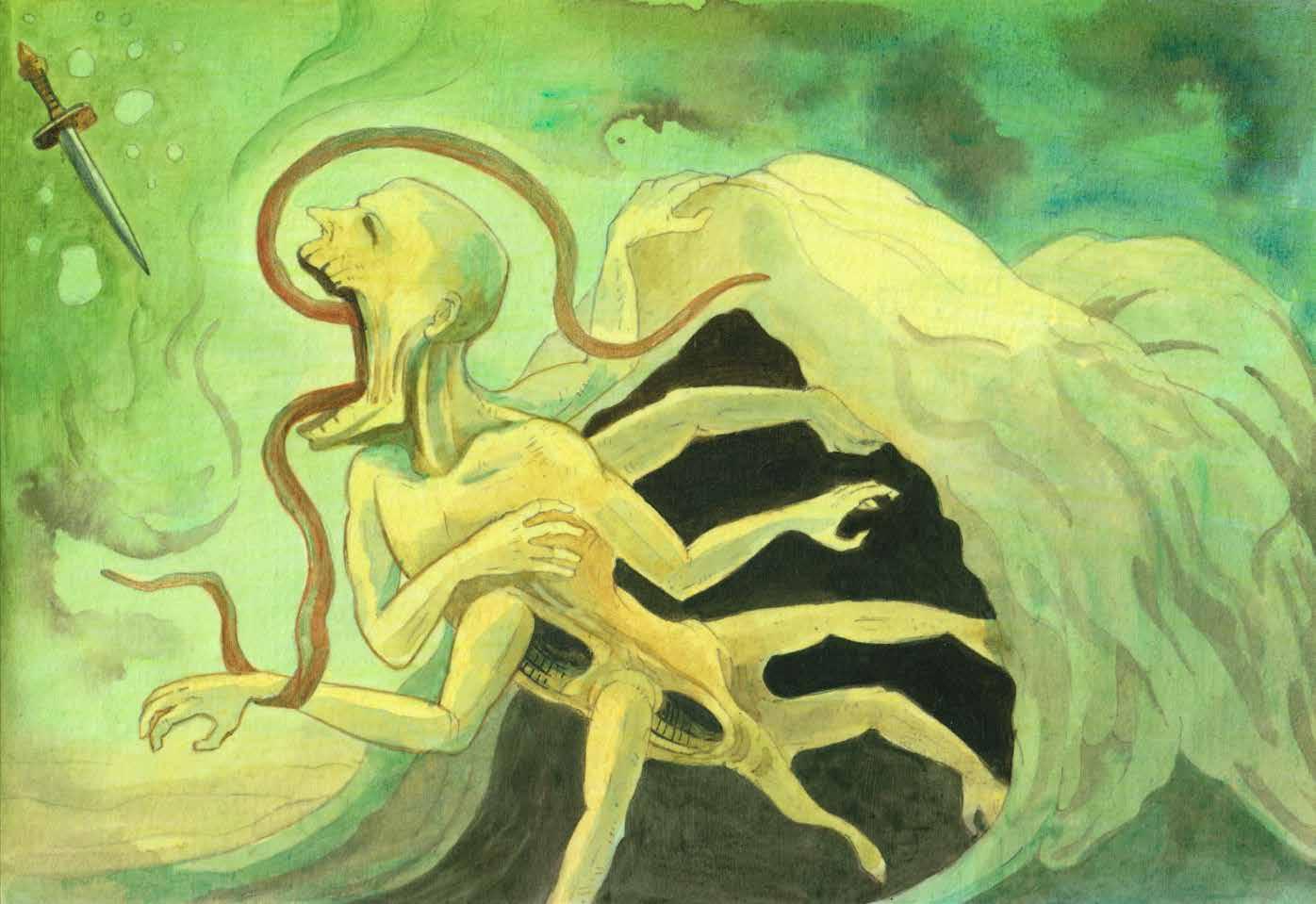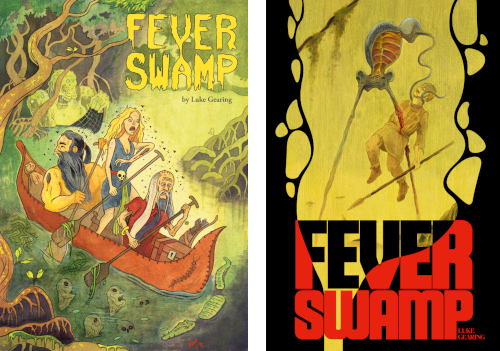 Copyright Luke Gearing & Andrew Walter
Copyright Luke Gearing & Andrew Walter
Fever Swamp by Luke Gearing is an ENNIE award winning OSR adventure based around a hex crawl in the titular swamp. First published in 2017 it received a second edition in 2024.
Let’s take a look at what’s changed.
All art in this post is from Fever Swamp, and is copyright Luke Gearing & Andrew Walter.
New art
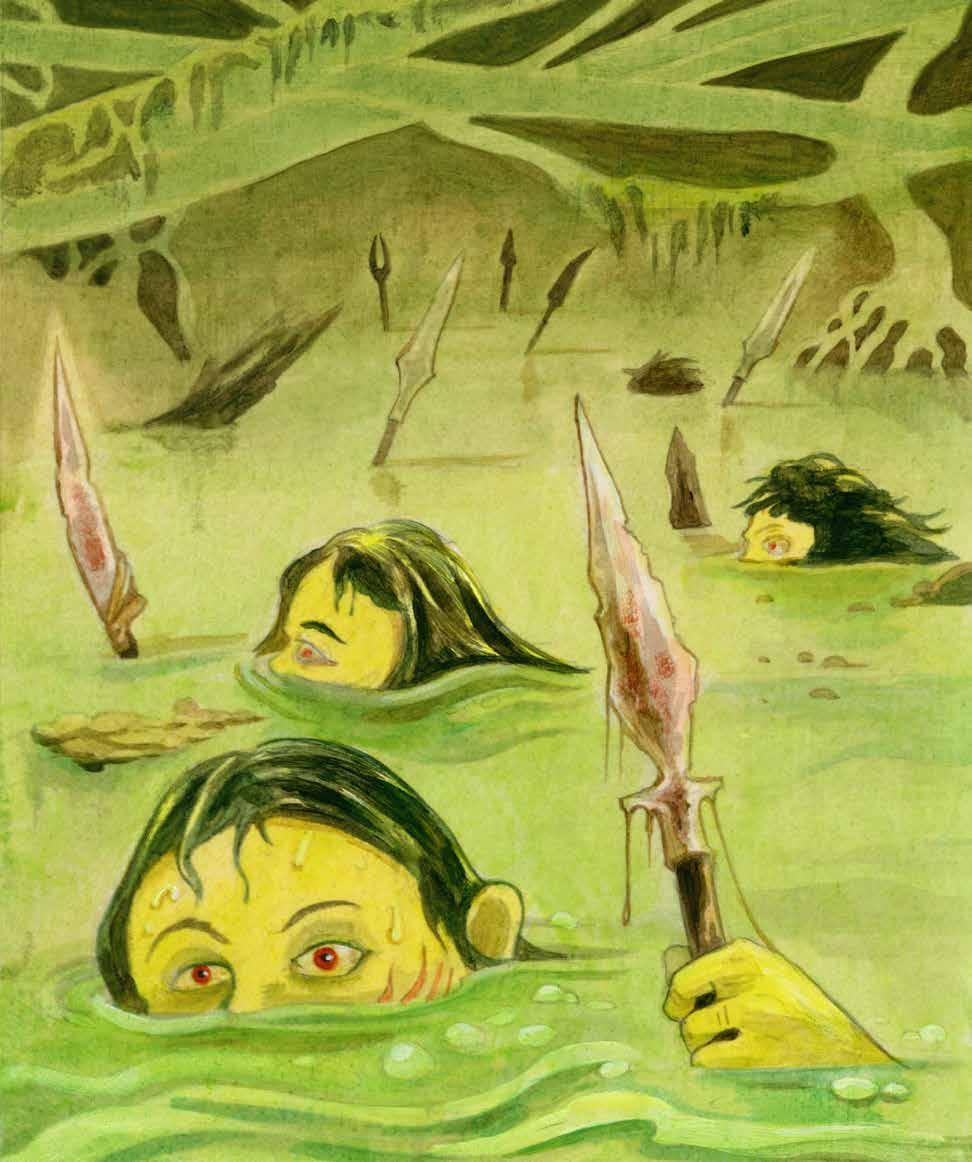 Scumboggles slink through the waters. The only thing they love more than manflesh is cheese.
Scumboggles slink through the waters. The only thing they love more than manflesh is cheese.
There are 27 new pieces of artwork, most in vibrant colour using a greeny-yellow palette. These add a lot: nearly every monster gets a full page colour illustration, but there are also quick portraits of important NPCs in the village of Clink, as well as a few pieces depicting some adventurers exploring the swamp. Nice!
The House of Banish
There is a new dungeon: the House of Banish. I like the flavour – a decaying manor house, unsuited to the clime, now rotting into the swamp, a metaphor for the owners: depraved rich colonialist types who destroyed themselves with dark magic.
“The swamp has invaded the interior of this home and tarnished the generational wealth ported here at such great expense. Paintings swell in their frames, and books return to the earth.”
The dungeon ties into the wider swamp in some neat ways: a magic item that makes you invisible to one of the swamp monsters; a quest hook that sends you after the Ur-corpse. However, it would need some work to run: The house itself has no map, only the caves beneath, and those are a vertical affair rendered from the side; the practicalities of traversing these steep tunnels are left vague.
Swamp witches
The swamp-witches have gone from generic wandering monsters to six distinct witches bursting with delicious and gruesome flavour.
“The Toad-Mother did not flee here – she chose her mantle and her batrachian kin. Her body swells with toad-spawn, and gobs of it escape her mouth when she speaks. Her approach is preceded by the cessation of croaking – none of her family dare speak in her presence.”
They each have brilliant snippets of backstory and motivation. However, I feel like we are missing some kind of grim portents or table of random faction moves. That would really help the GM to make the witches shine.
The People
The People, those native to the swamp, are improved in 2E. A misgiving I had with the original was the use of rascist stereotypes for the locals. As far as I can tell (as a white British man) this is better handled in the new edition, and it goes hand-in-hand with better content for a game.
The previous “tribe” table presented traits that played into stereotypes of uncontacted people (e.g. pygmies, cannibals) and didn’t give any insight into their internal lives – they were inscrutable and monstrous. Here’s one entry from the 1E table: “All bear open wounds, deliberately inflicted and left to fester in the swamp’s humid air”. The swamp itself was described thus: “no one in their right mind would ever visit”.
Now, the swamp is instead “inhospitable to those not born beneath the spirit-heavy canopies”. The six new “houses” organizing the People’s society are more humanising and better for gaming. They provide motivations, needs and wants. They’re still deeply weird; the difference is that the weirdness is compatible with them being real people that the PCs can gain some understanding of.
Here are snippets from three of the Houses:
“Clad in wood-fibre cloaks, the Tree-Wearing House can petition spirits for easy passage through the swamp…”
“They are happy to trade with outsiders for weapons, and many have steel weapons. Their warriors covet the guns of Nilfenberg.”
“They have seen the horror of Nilfenbergian interest, and the disturbances to their homes. They paint themselves white in recognition of their coming death… Eventually they will burn Clink.”
There are still plenty of creatures filling the monstrous/twisted human role (scumboggles, candlethieves), but the humans with an actual society are now presented as fully human, rather than subhuman.
The Encounters
The text of the encounters and dungeon entries is largely unchanged – but where it has been punched up the change is really worth having. An example: for the scumboggle hive we get this delightful new detail:
“Within their hive, suspended using vines, a single cow, hand-fed the rich vegetation of the swamp. If recovered, the cow’s cheese is of excellent quality – the cow is worth 350gp.”
The swamp-witch fused with a tree also gets great new details, but my favourite addition is to the ruined settlement. Previously this was just a place to roll to find loot while risking wanderers. Interaction was either abstracted away or entirely the GM’s to improvise. Now we get just enough to run exploration of these abandoned houses. Contrast the old:
“A Shaman-knife, effective against spirits.”
with the new:
“Hidden in the rafters but betrayed by dangling rope, a varnished box hides a long knife of bone, the handle crocodile-belly leather. Property of the shamans, it can strike the intangible. If worn openly in the presence of the People and not returned, -2 to all Reaction rolls.”
Quality of life
There are some great practical changes that make the GM’s life easier:
- Four new player-facing maps: a simple sketch of the rivers, the same with a hex-overlay, a painting of the rivers and, my favourite, a sketch with illustrations of some monsters added, to give your players the fear.
- A really useful extra page and a half about navigation in the swamp, mapping and example boats (with simple but effective art).
“The choked watercourses of Fever Swamp are uncertain and obscure, changing over time in defiance of cartography.”
- Daily events (disease check, corpse pile movement, encounters) are consolidated at the beginning, instead of scattered in multiple places.
- All twelve diseases now have names (Would you rather have earworms or boglung?)
- The rumours have had a slight rewrite. One of them now points the party towards the locals to find diseases for cures, which is great, but I would have liked more of these hooks in the other rumours.
- Numbers appearing are included in the encounter table
Layout & design
 Ur-Corpse ruins. 1E (top) vs 2E (bottom). Click to enlarge.
Ur-Corpse ruins. 1E (top) vs 2E (bottom). Click to enlarge.
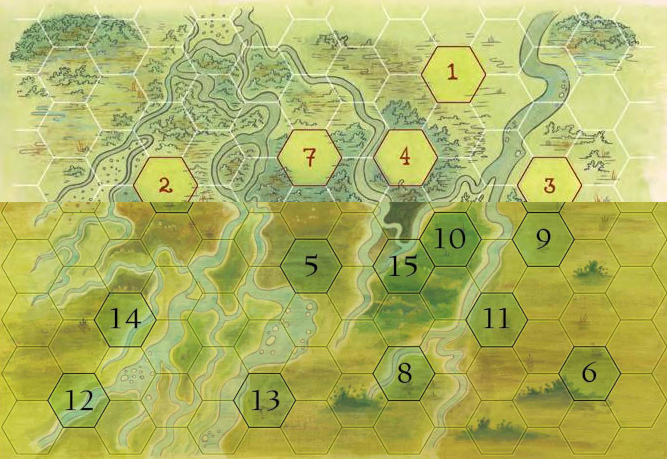 Hexmap. 1E (top) vs 2E (bottom). Click to enlarge.
Hexmap. 1E (top) vs 2E (bottom). Click to enlarge.
This is the one area where the new edition makes a misstep. The original’s design had a distinct voice and conveyed information stylishly. The new layout is much more “OSR standard” with less flair and a more predictable approach. Various tables use a poorly chosen serif font swimming in a sea of whitespace.
For an example, let’s consider the Ur-Corpse ruins, one of the mini-dungeons. In both editions we get the full map up front. However in 1E the key reproduces the relevant portion of the map next to each location.
I also loved the original’s choice to have checkboxes for monsters with a limited number appearing, reproducing portions of the hexmap within the hexmap key and many other thoughtful choices. The hexmap is more colourful and has better font choices in the original. Removing the watery background effect of 1E was almost certainly a good move, however.
Closing thoughts
There are a few other little changes – the hexes are now 6 miles instead of 18, there are minor rule tweaks to one of the PC classes and to the monsters, etc.
There are a handful of problems in the original that are not addressed here. The spirits are repeatedly emphasized as very important - the People have dedicated shamans whose job is to intercede with, summon, and banish the spirits. There are items to help you deal with them; a class about summoning them. But in practice, only one entry on the wandering monster table includes spirits, and they only show up in a couple of keyed locations. If I ran this I would want to hugely bump up the spirit count - perhaps at night?
As other reviewers have complained, the monastery lacks a map, and without it the location would be quite hard to run. This wasn’t adressed in the new edition.
Fever Swamp was already a brilliant module and the new content and the judicious application of juicy detail where it was needed makes this still better. I would love to see a third edition that had more of the original’s attention to usability through layout, but this is still perfectly functional.
You can purchase Fever Swamp at DriveThruRPG.
